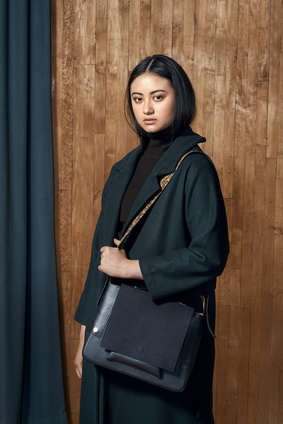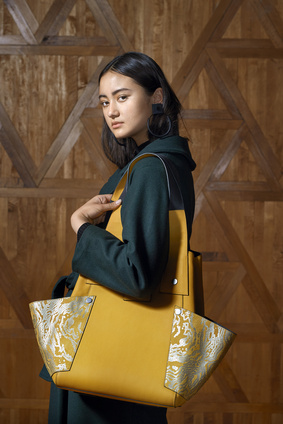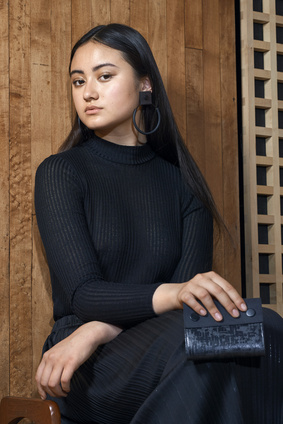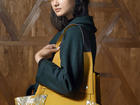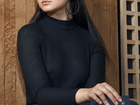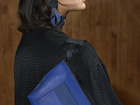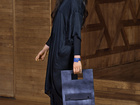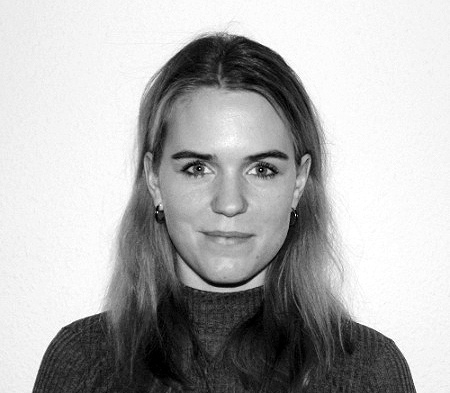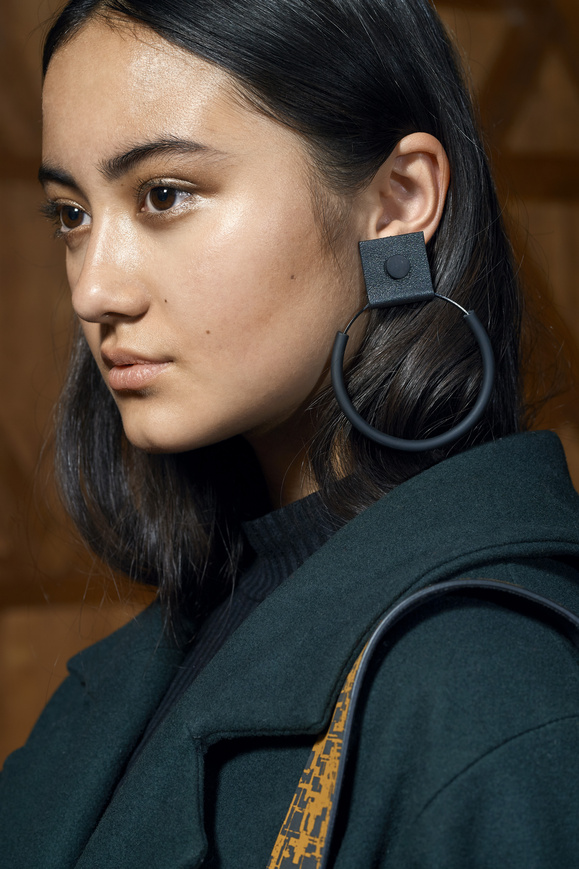Sustainability and leather are rare bedfellows. Manufacturing accessories and bags generally involves a lot of wasted material, and far too many trendy impulse buys only end up at the bottom of the wardrobe. Meet the designer, Lea Adelsten Olsen. In her final project she created a range of beautiful leather bags, produced with a minimum of material waste and with a long-lasting look.
What is your final project about?
The title of my final project was ‘Disconnected’. It is a collection of exclusive leather handbags with a focus on sustainability.
What was your motivation for this project in particular?
Because of ever-changing trends, I think there is an increasing tendency in our society to constantly buy new things in an attempt to be at the forefront of fashion. For several reasons, I regard this high level of consumption as a problem. On one hand, as consumers we generate a mountain of discarded clothes and accessories, which have either become ‘out’ or the quality of which is too poor to be used more than a few times. On the other hand, the major fashion companies create huge amounts of waste when they manufacture their products: waste that is harmful to the environment.
That is why I chose to incorporate sustainability into my project on several levels: not only to see how I could create products that would last longer than just one season, but also to focus on minimising waste when manufacturing my products.


In what way does your project contribute something new to the area/subject you have been working on?
Leather accessories are generally associated with huge waste in the manufacturing process. In fact, it is quite normal for a manufacturer to discard 40-50% of the leather because of defects and unevenness in the surface and because of clippings between the sections of the pattern.
In my final project I focused on how to reduce this waste significantly.
One of the ways I did this was by implementing ‘Zero Waste Pattern Cutting’ principles. Specifically, I employed a method called ‘Geo Cut’, based on the principle that all pattern parts consist of either rectangles or triangles that can be placed here and there in relation to one another like a kind of jigsaw puzzle. That meant I eliminated all waste from between the individual pattern sections.
I also collected all the remnants from the leather’s uneven edges and used these for small accessories, hang tags, labels and straps for zips on the bags.
Besides working on minimising waste, my priority was to create a unique look for my bags with ornamentation, combinations of materials and choices of colour. For example, I designed a series of prints, which I printed on my leathers using various printing techniques and decorated various parts of the bags with them.
What methods did you use when working on your project?
To make my project more realistic, I entered into a collaboration with ECCO, who were nice enough to help me with materials and the manufacture of my products. They also advised me on how best to execute the features of the bags, and how to work with different leathers. I also had an agreement with Kvadrat, who sponsored certain materials in my collection: materials that work brilliantly together with the leathers from ECCO.
To which UN goals – if any – does your project relate, and why?
My project relates to the UN global goals numbers 8 and 12, both of which focus on sustainable production. Global goal 12 also focuses on responsible consumption. I thought a lot about this along the way during this project.
I wanted to create a collection of handbags and accessories, which is not trend-based, and which is made using high quality materials that will last for a number of years. I hope that the people who buy my products will look after them and use them for a long time.
What are the most enjoyable and the most difficult aspects of designing the way you do?
I like to work conceptually and Zero Waste method is a fantastic philosophy to work with. It can lead to some fascinating silhouettes, which I would not otherwise have thought of. Conversely, I was limited in terms of shape. I did not make use of circular shapes, for example. But I don’t think this affected my project. The entire collection is very coherent.
Can you see any development/employment opportunities in your degree project?
I can see lots of employment and development opportunities in my degree project. Sustainability is a theme that is receiving more and more attention in the media. We are going to have to change our forms of consumption and manufacturing or we will destroy the planet. Of course, some companies are also reacting to this, so it would be appropriate to hire a newly qualified designer who has some innovative ideas on how to work sustainably.
My method is also quite tangible. Working on Zero Waste lines and with an aesthetic of durability does not require major technical equipment, as opposed to recycling old fabrics in the manufacture of new goods. On the contrary, it is something that takes place in the actual design process of the individual product.
Where do you see yourself career-wise in five years’ time?
I am very open in terms of what will happen in the future. In five years’ time I could see myself in a large fashion company in charge of prints and accessories. But of course I could also image starting my own company. It can be difficult to get your foot in the door of the fashion industry wither as an employee or as a freelance designer. I hope I will achieve a bit more clarification about what is going to happen over the coming months. My plan is to make contact with various companies and maybe suppliers.


